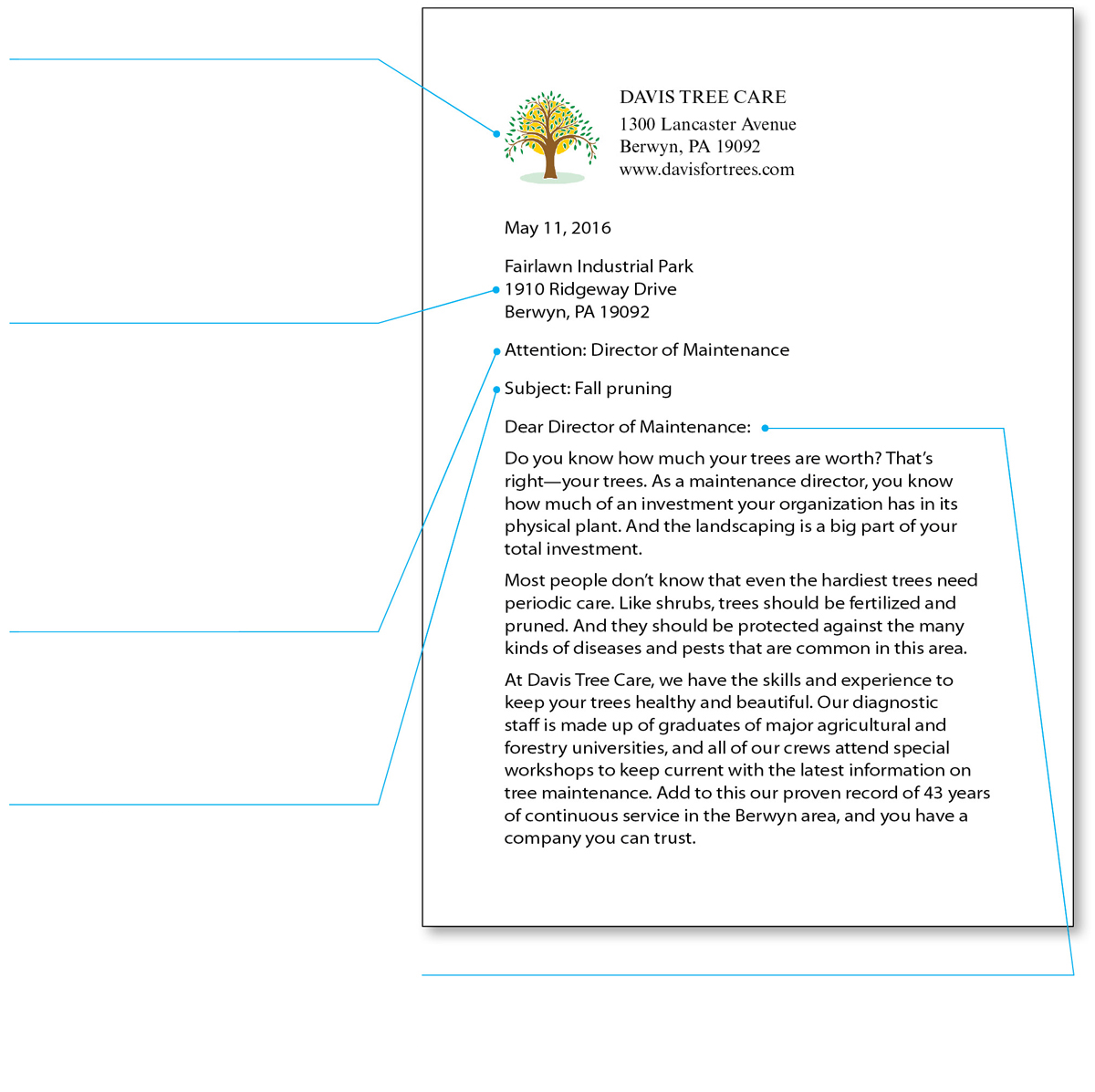
Heading. Most organizations use letterhead stationery with their heading printed at the top. This preprinted information and the date the letter is sent make up the heading. If you are using blank paper rather than letterhead, your address (without your name) and the date form the heading. Whether you use letterhead or blank paper for the first page, do not number it. Use blank paper for the second and all subsequent pages.
Inside Address. If you are writing to an individual who has a professional title—such as Professor, Dr., or, for public officials, Honorable—use it. If not, use Mr. or Ms. (unless you know the recipient prefers Mrs. or Miss). If the reader's position fits on the same line as the name, add it after a comma; otherwise, drop it to the line below. Spell the name of the organization the way the organization itself does: for example, International Business Machines calls itself IBM. Include the complete mailing address: street number and name, city, state, and zip code.
Attention Line. Sometimes you will be unable to address a letter to a particular person because you don't know (and cannot easily find out) the name of the individual who holds that position in the company.
Subject Line. The subject line is an optional element in a letter. Use either a project number (for example, “Subject: Project 31402”) or a brief phrase defining the subject (for example, “Subject: Price quotation for the R13 submersible pump”).
Salutation. If you decide not to use an attention line or a subject line, put the salutation, or greeting, two lines below the inside address. The traditional salutation is Dear, followed by the reader's courtesy title and last name and then a colon (not a comma):
Dear Ms. Hawkins:

FIGURE 9.3 Elements of a Letter
Header for second page.
Body. In most cases, the body contains at least three paragraphs: an introductory paragraph, a concluding paragraph, and one or more body paragraphs.
Complimentary Close. The conventional phrases Sincerely, Sincerely yours, Yours sincerely, Yours very truly, and Very truly yours are interchangeable.
Signature. Type your full name on the fourth line below the complimentary close. Sign the letter, in ink, above the printed name. Most organizations prefer that you include your position under your printed name.
Copy Line. If you want the primary recipient to know that other people are receiving a copy of the letter, include a copy line. Use the symbol c (for “copy”) followed by the names of the other recipients (listed either alphabetically or according to organizational rank). If appropriate, use the symbol cc (for “courtesy copy”) followed by the names of recipients who are less directly affected by the letter.
Enclosure Line. If the envelope contains documents other than the letter, include an enclosure line that indicates the number of enclosures. For more than one enclosure, add the number: “Enclosures (2).” In determining the number of enclosures, count only separate items, not pages. A three-page memo and a 10-page report constitute only two enclosures. Some writers like to identify the enclosures:
Enclosure: 2014 Placement Bulletin
Enclosures (2): “This Year at Ammex”
2015 Annual Report